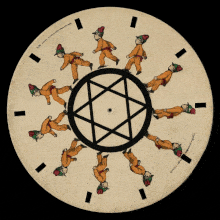Animation has become an integral part of visual communication in various industries, including entertainment, marketing, and education. Mastering different animation techniques allows artists and designers to effectively convey complex ideas and engage audiences in unique ways. The versatility of animation enables creators to bring imaginative concepts to life, transcending the limitations of live-action filming. By understanding and applying these diverse animation methods, professionals can enhance their skillset and produce visually compelling content that resonates with viewers. As Explain Visually we share our experience with you in this article. Let’s get started!
Introduction to animation

Animation has revolutionized visual storytelling and communication, offering a diverse array of techniques for creators to master. From classic hand-drawn methods to cutting-edge digital innovations, each approach provides distinct creative opportunities. So let’s explore 15 essential animation techniques that can elevate your visual content:
- 2D Vector Animation
- Hand-Drawn Animation
- 3D Animation
- Motion Graphics
- Typography Animation
- Rotoscope Animation
- Cut-out Animation
- Pinscreen Animation
- Live-Animated
- Screencast Animation
- Mechanical Animation
- Whiteboard animation
- Stop Motion Animation
- Augmented Reality Animation
- Retro Animation.
1. 2D Vector Animation
2D Vector Animation is a key technique in modern digital animation, especially for marketing content. It uses computer software to create scalable graphics based on mathematical equations. The process involves designing vector elements that can be easily modified and moved, with software automatically creating smooth transitions between keyframes.
Vector film|Technology developed by Sharp.
This style produces clean, dynamic 2D visuals, effectively conveying ideas and narratives. It’s ideal for explainer videos, brand storytelling, and visualizing complex concepts in an accessible manner. A major advantage of 2D vector animation is its cost-effectiveness and streamlined production process, allowing for a quick creation of impactful visual content.
Read also: Expert 2D animation agency services – a comprehensive guide.
2. Hand-Drawn Animation
Hand-drawn animation is the traditional approach to creating animated content, involving skilled artists crafting each frame by hand. Its unique charm and organic feel excel in character-driven narratives, imbuing protagonists with nuanced expressions and movements.
While historically labor-intensive and costly, the integration of digital tools has streamlined the process, reducing production time and expenses. Modern software assists in various stages while preserving the characteristic hand-crafted aesthetic.
The concept of hand-drawn animation dates back to the phenakistoscope, invented by Joseph Plateau in 1832. This early animation device used a spinning disk with sequential drawings to create the illusion of motion, laying the groundwork for modern animation techniques.

Despite technological advancements, hand-drawn techniques maintain their appeal, creating visually captivating worlds that engage audiences through artisanal quality and timeless charm. Tip: Create comprehensive character model sheets and detailed storyboards to ensure consistency and streamline the animation process.
3. 3D Animation
3D Animation, or Computer Generated Imagery (CGI), has become the dominant format in contemporary animated films. It operates in a three-dimensional space, using digital models of characters, objects, and environments. The process involves creating detailed 3D models and using advanced software to generate complex movements and interactions. 3D animation offers versatility, capable of rendering hyper-realistic visuals or stylized artistic interpretations.
First 3D polygon animation (1972) | Computer animated hand. Source: Ultimate History of CGI
This technique is particularly effective for informational and demonstrative content, accurately representing physical objects and spaces. It’s invaluable for product demonstrations, architectural visualizations, and scientific simulations, enhancing viewer comprehension of complex structures and processes.
Fun fact:
The first fully computer-animated feature film, “Toy Story” (1995), required 800,000 machine hours to produce. In contrast, Pixar’s “Monsters University” (2013) needed about 100 million CPU hours, illustrating the exponential increase in computational power and complexity in modern 3D animation.
4. Motion Graphics
Motion graphics combines graphic design and animation techniques, using moving visual elements and typography to convey messages. It gained prominence through designers like Saul Bass in the 1960s, who revolutionized film title sequences.
The opening title sequence of the movie “Catch Me If You Can” (2003) designed by Olivier Kuntzel and Florence Deygas. This sequence is often cited as a classic example of motion graphics in film, demonstrating sophisticated use of typography and iconography, seamless transitions between scenesand cohesive visual style.
Digital technology has made motion graphics more popular and accessible. This versatile medium excels in transforming complex information into engaging, visually compelling content, particularly effective for animating statistical data and abstract concepts.
A key advantage of motion graphics is its cost-effectiveness. Using basic shapes and typography, designers can create high-impact visuals without elaborate production processes. Synchronized audio elements further enhance audience engagement, creating a multi-sensory experience that captures viewer attention.
5. Typography Animation
Typography animation, or kinetic typography, brings textual elements to life through motion and visual effects, enhancing the impact of written or spoken content. Typically executed using 2D vector animation techniques, it excels in presenting complex information in an easily digestible format and visualizing inspirational speeches or narratives.
iPhone SE (2022) Commercial. This example effectively demonstrates how typography animation can transform spoken content into a visually engaging experience, making it easier for viewers to follow and remember the information presented.
Key advantages include simplicity and cost-effectiveness, though creating engaging content requires skilled animators. The technique demands a balance between legibility and creativity, considering factors like timing, pacing, and visual hierarchy. When executed effectively, typography animation can convey complex ideas concisely and engagingly, making it valuable in marketing, education, and entertainment.
6. Rotoscope Animation
Rotoscope animation involves animators tracing over live-action footage to create realistic animated sequences. It gained prominence with Disney’s “Snow White and the Seven Dwarfs” in 1937 and remains relevant in modern cinema, as seen in Richard Linklater’s “A Scanner Darkly” (2006).
“Waking Life” (2001) Directed by Richard Linklater, this film used innovative digital rotoscoping techniques to create a dreamlike aesthetic.
Digital technology has streamlined the rotoscoping process, making it more accessible and efficient. Contemporary animators can trace movements directly from digital video sources, creating 2D animations that simulate three-dimensional space and movement. This technique continues to offer an innovative approach to creating authentic, lifelike character movements, blending traditional artistry with modern technology to produce visually striking and emotionally resonant animated content across various media platforms.
7. Cut-out Animation
Cut-out animation gained recognition through its use in South Park, where creators initially used paper cutouts and stop-motion photography. While traditionally associated with children’s programming, the technique has evolved from physical materials to digital methods, streamlining the animation process.
South Park |Season 1 original trailer 1997
Digital cut-out animation offers an efficient means of producing character-driven animations, particularly popular for explainer videos and narrative-based marketing content. This approach retains the visual appeal of traditional cut-out animation while leveraging modern technology’s advantages. The result is a versatile style that combines nostalgic charm with digital precision, effectively conveying complex ideas through relatable characters and simplified visuals.
8. Pinscreen Animation
Pinscreen animation, pioneered by Alexandre Alexeïeff in the 1930s, uses a board with thousands of retractable metal pins to create moving images. Each pin functions as a point of light and shadow, allowing animators to craft intricate visual compositions with depth and texture. Alexeïeff and Claire Parker produced surrealistic animated sequences using this method.
Despite limited mainstream adoption, pinscreen animation has a dedicated following among experimental animators. Recent digital advancements have revived interest, merging its tactile quality with modern technology. This unique art form continues to captivate audiences by blending analog and digital storytelling techniques.
Alexeïeff’s technique was used for the opening sequence of Orson Welles’ 1962 film adaptation of “The Trial,” showcasing its ability to convey complex, atmospheric narratives.
9. Live-Animated
Live-animated content merges digital elements with real-world footage, creating a hybrid visual experience. This technique superimposes animated graphics onto live-action video, with motion tracking software enabling seamless integration.
As camera movements occur, digital elements adjust their position dynamically, maintaining visual cohesion. This process is facilitated by modern video editing software, which allows animators and editors to focus on crafting compelling narratives.
The technique is particularly effective in bringing infographic data to life within tangible contexts or demonstrating product functionality in real-world scenarios. It makes complex concepts more accessible by embedding information into familiar environments.
“Space Jam” (1996) and its sequel “Space Jam: A New Legacy” (2021): create characters. These films feature real basketball players interacting with animated Looney Tunes characters.
Live-animated content is versatile, finding applications in educational videos, product demonstrations, and interactive marketing campaigns. It bridges the gap between abstract information and concrete contexts, enhancing viewer comprehension and retention.
10. Screencast Animation
Screencast animation is an effective technique for creating instructional videos by capturing on-screen activities to demonstrate software functionality. Its core strength lies in providing a visual walkthrough of digital environments, enhanced with animated overlays and narration for detailed explanations.
The Lemonade App. A simple screencast video. It focuses on movements within the application.
This approach is particularly valuable for showcasing digital products, allowing audiences to see user interfaces in action, which enhances understanding and engagement. By adhering to the “show, don’t tell” principle, screencasts excel in tutorials and informational content, positively influencing conversion rates in marketing.
The direct visual nature of screencasts simplifies complex processes and reduces the learning curve for new users.
11. Mechanical Animation
Mechanical animation visually represents the inner workings of products, devices, or systems using 3D modeling. Its strength lies in simplifying complex technical concepts by focusing on essential components and their interactions, communicating intricate information.
The All New AMG 4.0 Liter V8 Biturbo Engine (M178). Mercedes used mechanical animation to showcase their AMG engine, providing viewers with an exciting insight into the engine’s development and function.
While ideal for demonstrating technical products and engineering solutions, it has broader applications in illustrating innovative designs and their performance. The addition of voice-over narration and music can transform technical presentations into engaging experiences. Mechanical animation is valuable for promotional materials, educational content, and training materials, effectively disseminating knowledge about complex systems or processes.
12. Whiteboard Animation
Whiteboard animation emerged in 2007, pioneered by UPS for service explanation videos. It features a presenter illustrating concepts on a whiteboard, creating a new animated content paradigm.
A whiteboard-style video created| AleBilet
The format’s simplicity and effectiveness led to a genre of whiteboard-style animations, transitioning from physical drawing to digital methods emulating hand-drawn aesthetics. It’s particularly effective for explainer videos, as it uses uncomplicated visuals to clarify complex ideas. While widespread adoption has raised concerns about visual saturation, whiteboard animation remains a valuable tool, offering simplicity and clarity in communicating various concepts.
13. Stop Motion Animation
Stop motion animation brings inanimate objects to life through incremental movements and sequential photography. It gained prominence in classic children’s TV shows like “The Clangers” and “Magic Roundabout.”
Its strengths include accessibility and adaptability, allowing for character-driven narratives or innovative product animations.The tactile nature of stop motion resonates with audiences, offering authenticity and charm through real-world textures and materials. This technique provides a refreshing contrast to polished computer-generated imagery.
The oldest known stop motion animation is “The Humpty Dumpty Circus” (1898) by Albert E. Smith and J. Stuart Blackton, using toy circus performers and animals.
Despite digital advancements, stop motion remains relevant due to its unique, handcrafted aesthetic that’s difficult to replicate digitally. This charm is exemplified in early Aardman animations films, which gained popularity for their distinctive clay animation style.
14. Augmented Reality Animation
Augmented Reality (AR) animation fuses digital imagery with real-world environments, creating immersive and interactive visual experiences. It has gained recognition through applications like Snapchat’s live filters, which overlay digital elements onto real-time images.

Animated characters “Pokémon GO”. This mobile game uses AR to place virtual Pokémon characters in the real world, viewed through a smartphone camera.
AR animation is versatile across devices, including smartphones, tablets, and specialized AR headsets. This allows digital content to integrate seamlessly with the physical world in real-time, enhancing user engagement. A notable application is product activation through visual recognition, where viewing a product’s packaging through a camera-enabled device triggers animated content. AR animation has also made inroads in education and entertainment, such as bringing characters to life in children’s books.
15. Retro Animation
Retro animation evokes aesthetics from earlier eras of animation and digital media, drawing inspiration from vintage cartoons and early video game graphics. Its appeal lies in forging emotional connections through familiar visual cues, targeting specific demographics with nostalgic aesthetics.
The term “pixel art” was coined in 1982, but the aesthetic emerged earlier, with Atari’s “Adventure” (1979) being one of the first games to use it extensively.
Despite its vintage appearance, retro animation is created using modern digital tools, allowing efficient production while maintaining classic charm. When skillfully executed, it can evoke powerful emotional responses in viewers.
Retro animation’s versatility allows blending classic visuals with modern storytelling, creating a unique fusion appealing to both nostalgia and contemporary tastes. This approach is effective in marketing, indie game development, and artistic projects seeking distinct visual identities.
Other animation techniques

Isometric Animated Video
Creates 3D illusions using 2D graphics, ideal for presenting complex spatial relationships in educational content and architectural layouts. Cost-effective alternative to full 3D animation, with some creative limitations due to fixed viewpoint.
FlipBook Animation
Elemental form of animation using hand-drawn illustrations on consecutive pages. Popular on short-form social media platforms, offering a tactile, handcrafted quality contrasting digital graphics. Cost-effective and creatively challenging.
Claymation Animation
Stop-motion technique using plasticine clay, popularized by Aardman Animations. Retains appeal due to its tangible quality and charming imperfections. Effective for younger audiences and nostalgia-driven projects.
Minimalist Animation
Focuses on essential elements for clear, impactful messaging. Aligns with brands emphasizing simplicity and efficiency. Challenges creators to distill complex ideas into core elements.
360 Animation
Immerses viewers in virtual environments, pioneered by gaming and VR industries. Creates interactive “metaverses” for diverse applications from virtual tours to educational experiences, enhancing user engagement.
The first 360° animation, “The Passenger,” was created in 2016 by Google Spotlight Stories, revolutionizing immersive storytelling.
Animation techniques – which format should you choose?
Navigating the myriad of animation formats available can be daunting, especially when you’re seeking the most effective way to communicate your message. When you collaborate with a skilled agency like ours, you gain access to our team of experts equipped with the knowledge and experience necessary to identify the optimal approach for your project.
The process begins with a comprehensive brief that outlines your core message and desired audience response. Your brief also specifies your budgetary constraints and timelines, allowing us to tailor our strategy accordingly. Using this information, our creative team will recommend the most suitable animation styles and formats for you, ensuring that the chosen approach aligns with both your creative vision and practical feasibility within your established budget and timeframe.
To help you visualize the project, we’ll develop storyboards and mood boards, offering you a glimpse into the anticipated final product. This collaborative process fosters alignment between you and us, ensuring your satisfaction before production commences and your animations are brought to life.
At Explain Visually Animation Studio, we have successfully crafted a wide range of animated videos for some of the UK’s and Poland’s leading organizations. Our experienced team combines creativity and expertise to deliver tailored solutions that effectively achieve your objectives.
So where should you start? By contacting us, of course!😉


